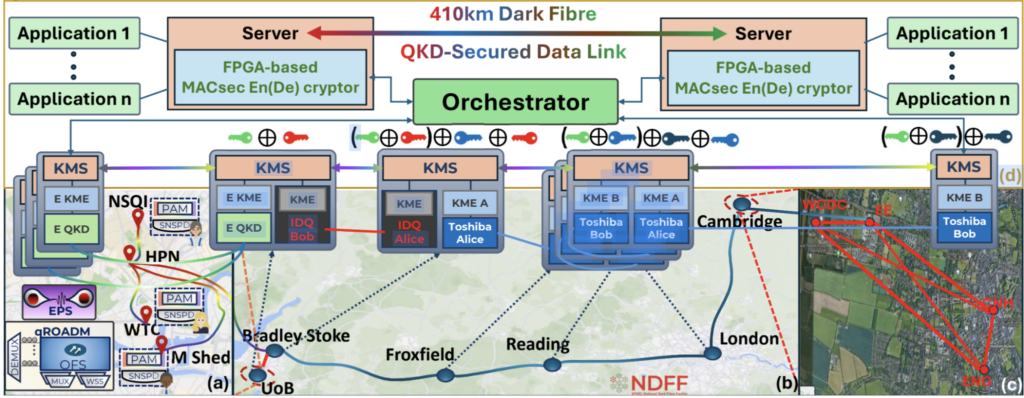Researchers from the Universities of Bristol and Cambridge have successfully demonstrated the UK’s first long-distance quantum-secured data transmission, including a live quantum-encrypted video call, over a 410-kilometre fibre optic link. The achievement represents a major milestone in the development of a future quantum internet, integrating multiple quantum key distribution (QKD) technologies with existing classical communication infrastructure.
The system uses two QKD approaches: encoding keys in single photons and distributing entanglement between nodes. This marks the first time both methods have been simultaneously deployed on a long-range network, enabling ultra-secure data sharing over standard fibre infrastructure without the need for major hardware upgrades. Demonstrations included secure medical data transfer, quantum-protected remote data centre access, and a real-time video call between Bristol and Cambridge.
The quantum link runs over the UK Quantum Network (UKQN), developed over the past decade with support from the Engineering and Physical Sciences Research Council (EPSRC) and the Quantum Communications Hub. The network includes metropolitan quantum links in Cambridge and Bristol, interconnected by a backbone of four fibre links and three intermediate nodes spanning over 400 km, using the National Dark Fibre Facility.
This project is the first to combine both entanglement-based and conventional QKD in a single integrated system capable of handling real-world traffic. It confirms that current infrastructure can support quantum-secured communication at scale, potentially enabling a gradual rollout of national and international quantum networks without requiring costly system replacements.
The results were presented at the 2025 Optical Fiber Communications Conference in San Francisco and will be extended under the newly funded Integrated Quantum Networks Hub. The project aims to develop scalable quantum networking technologies for applications ranging from distributed quantum computing to satellite-based quantum communication.
Read more from the University of Cambridge here, Innovation News Network here, or Computing UK here.
April 10, 2025


